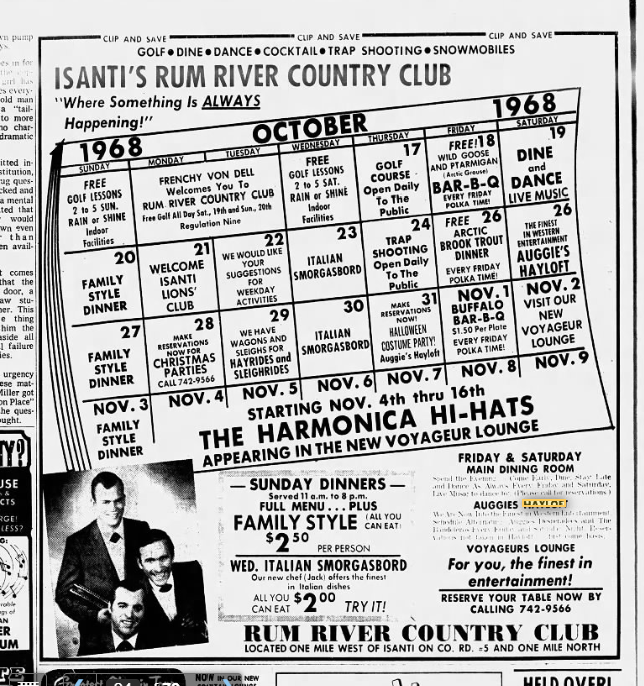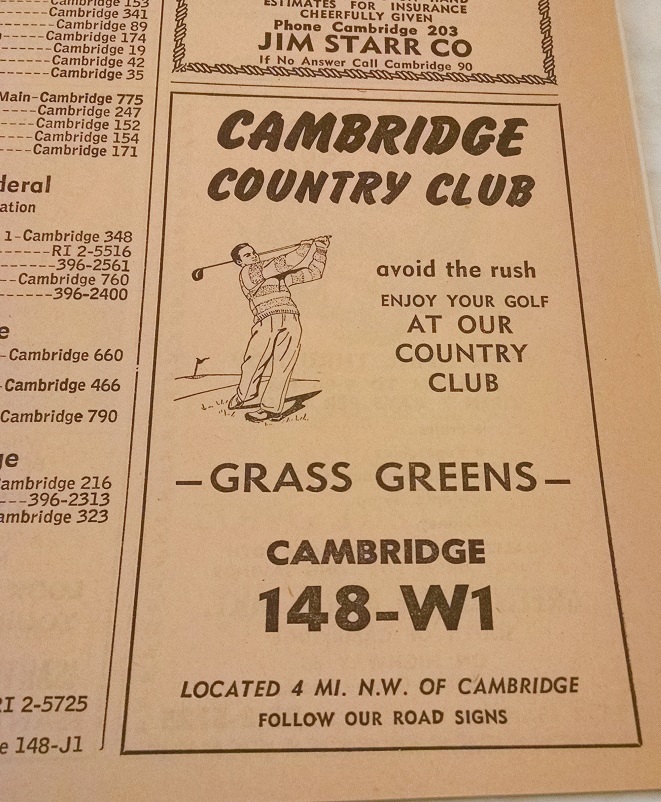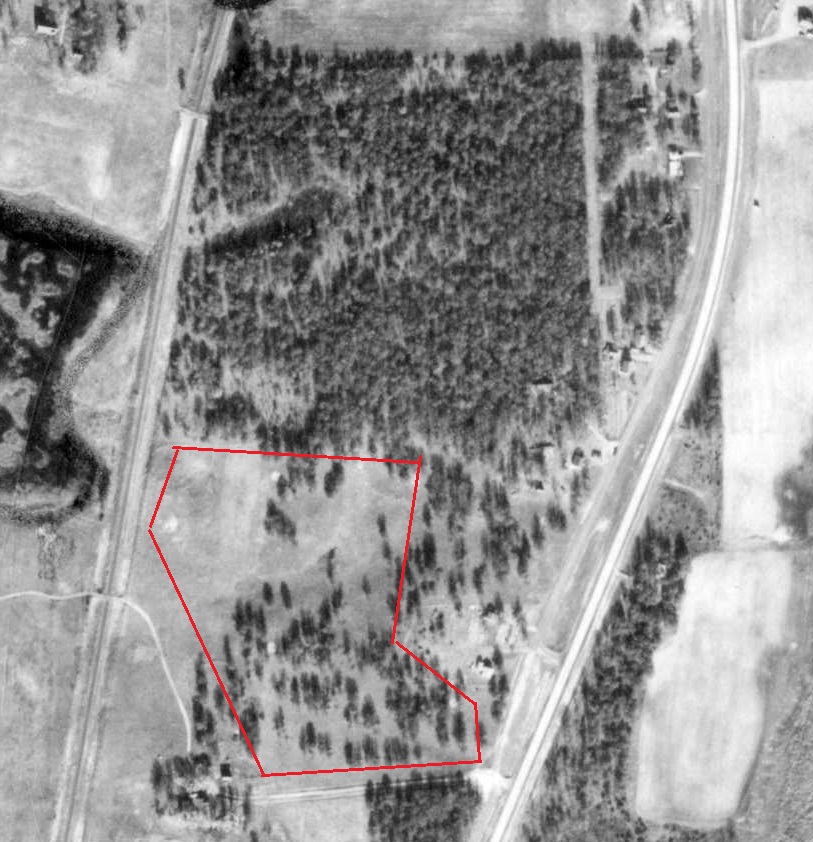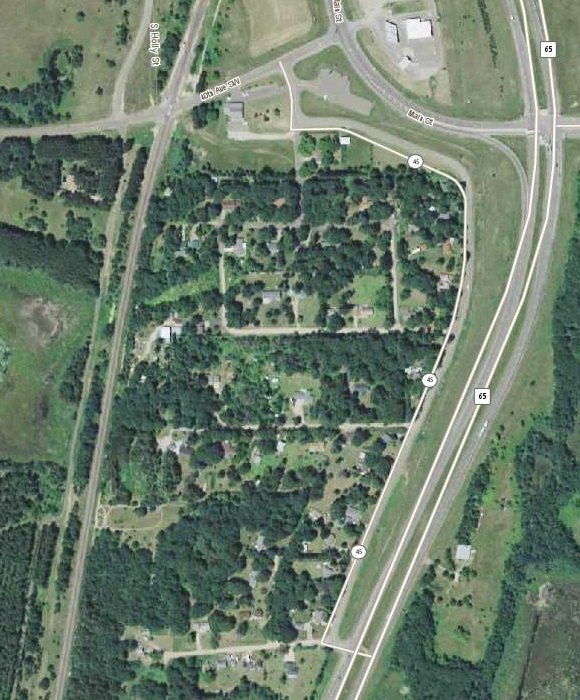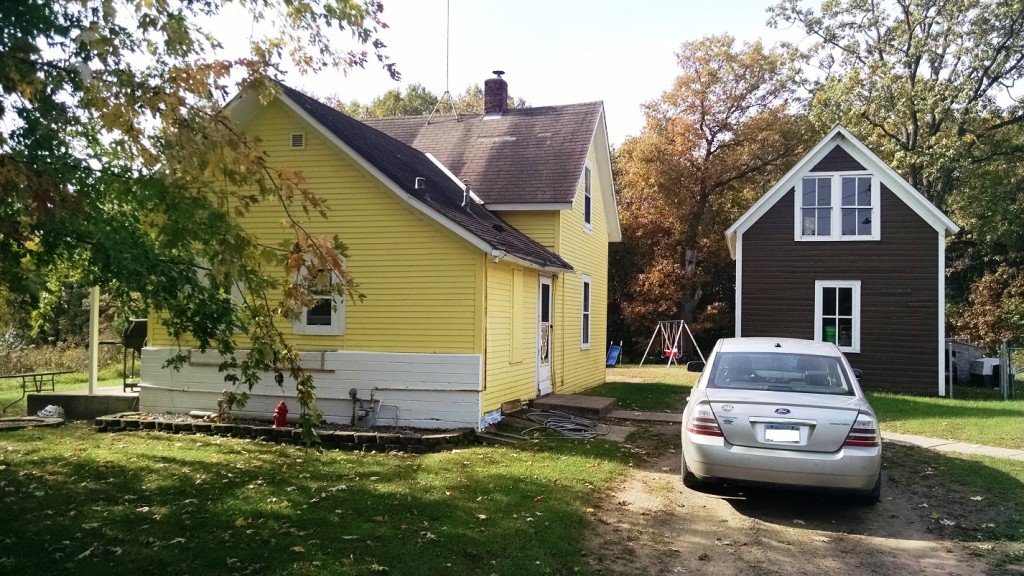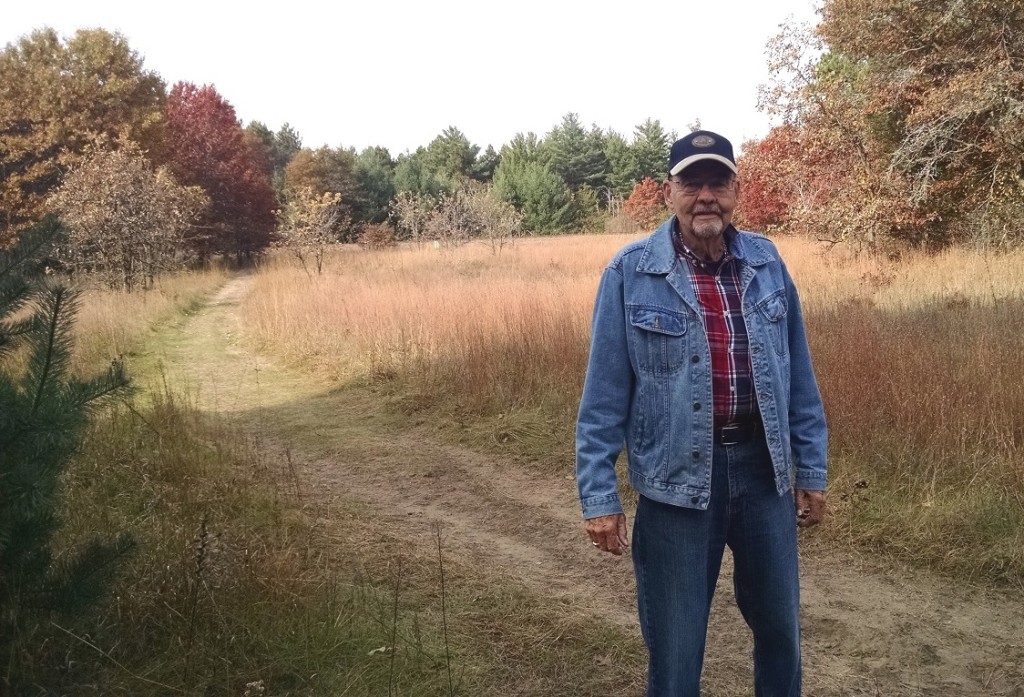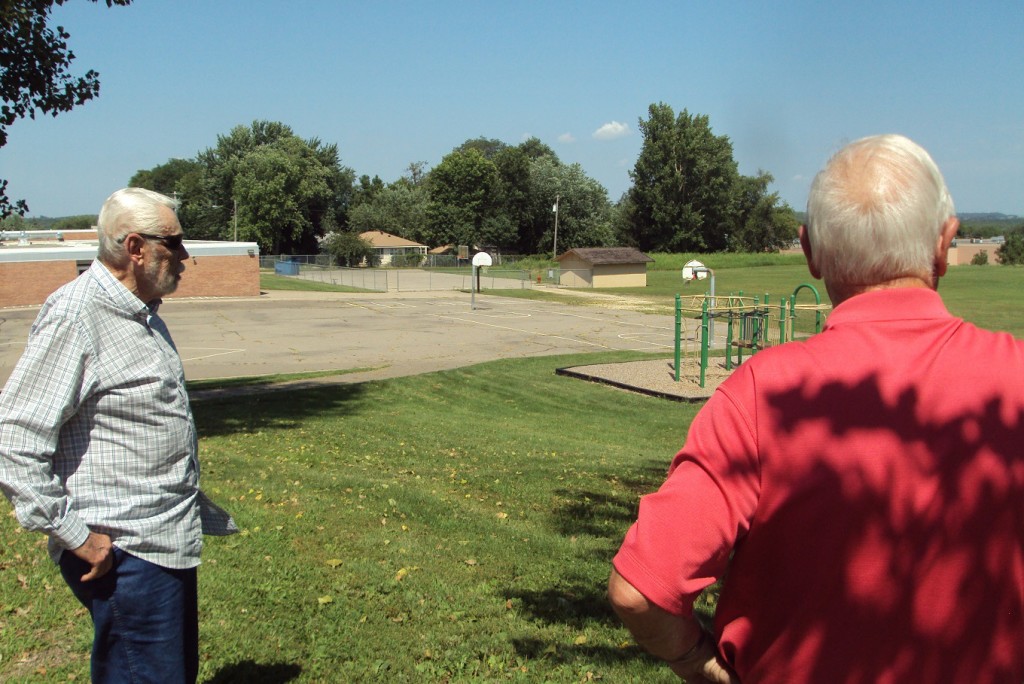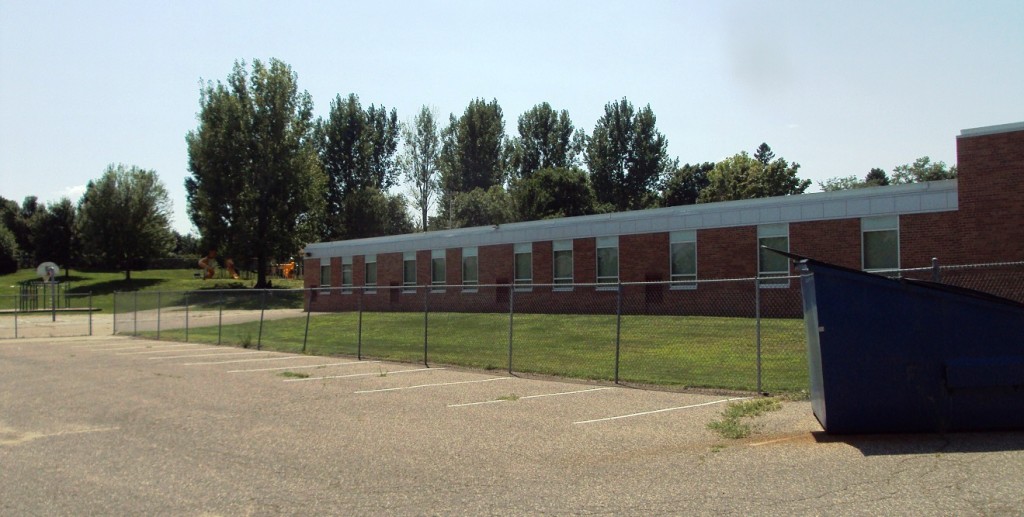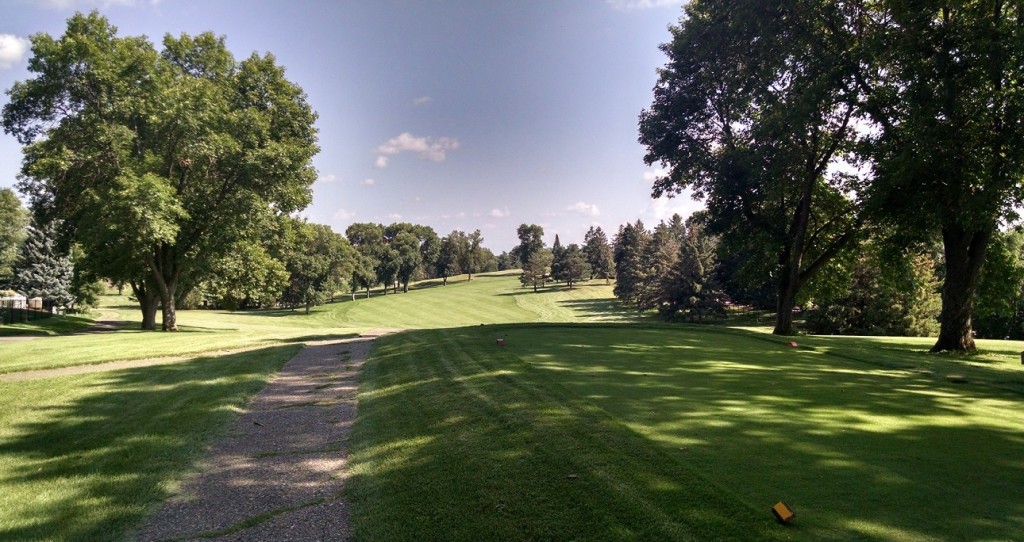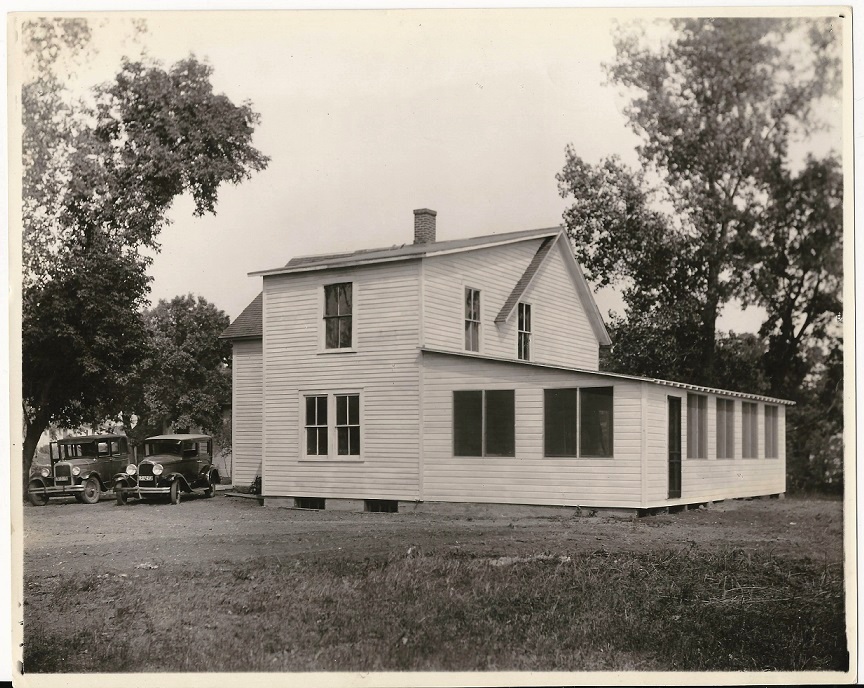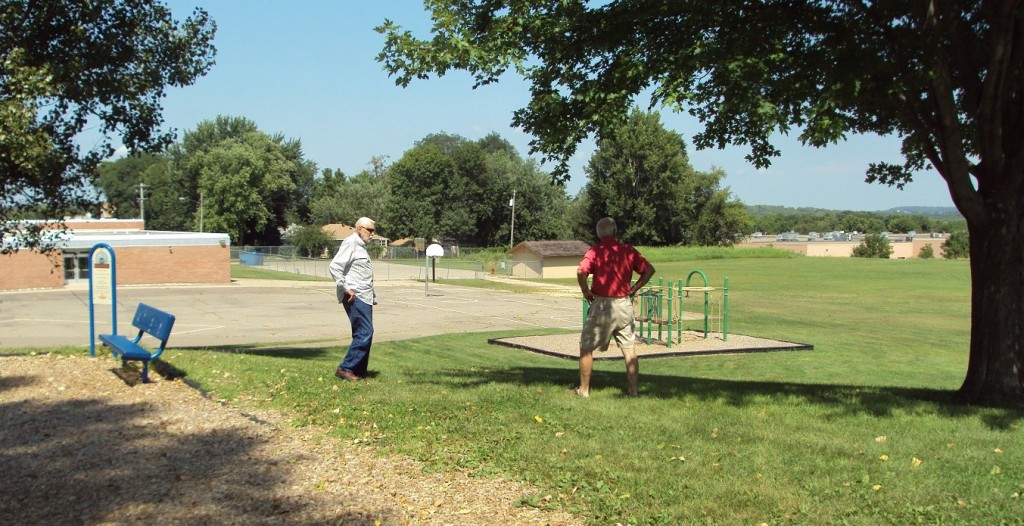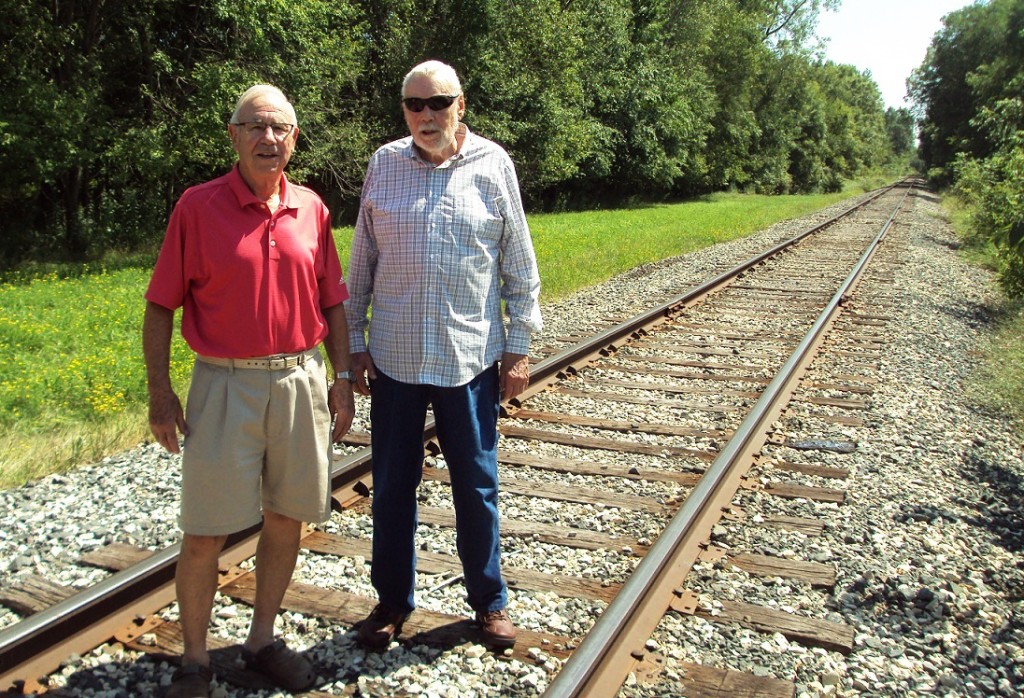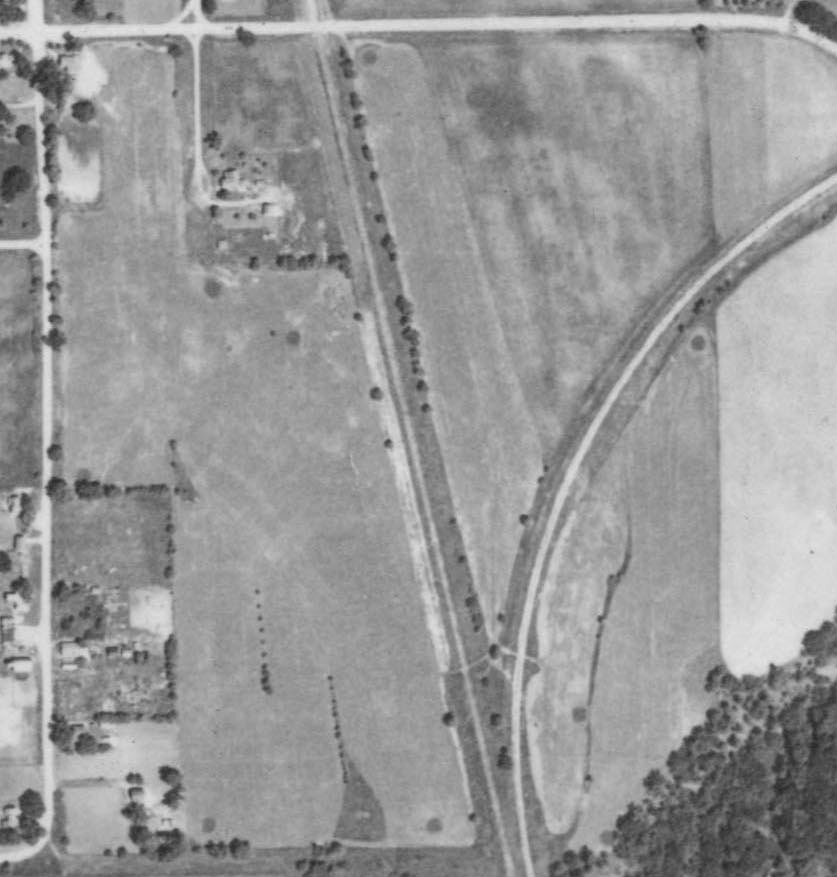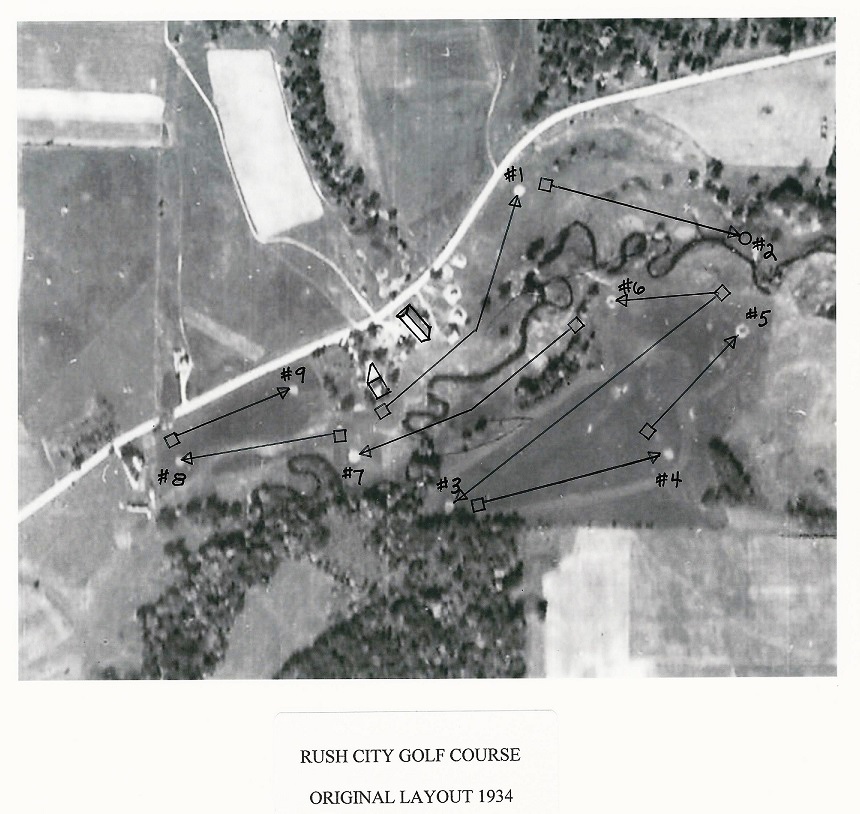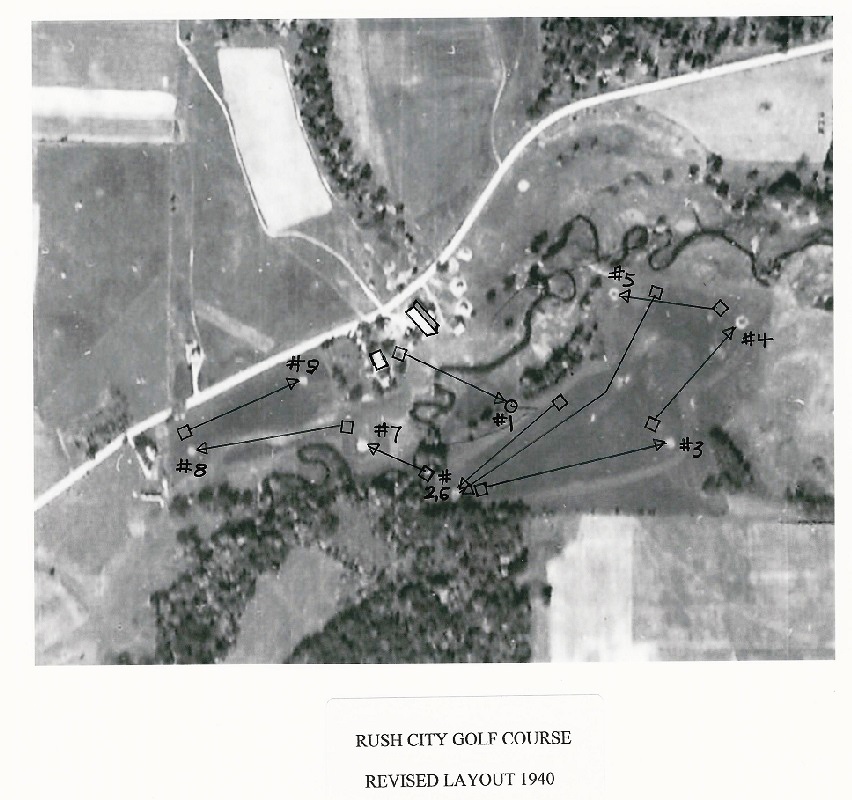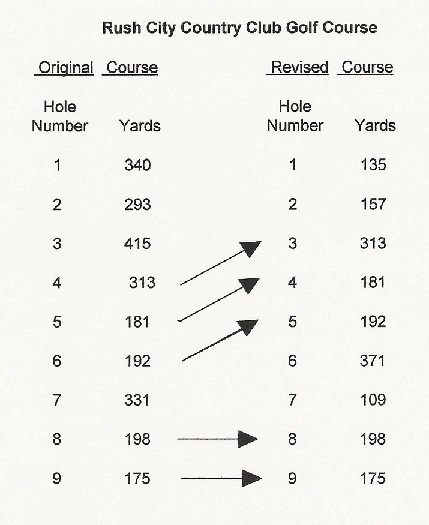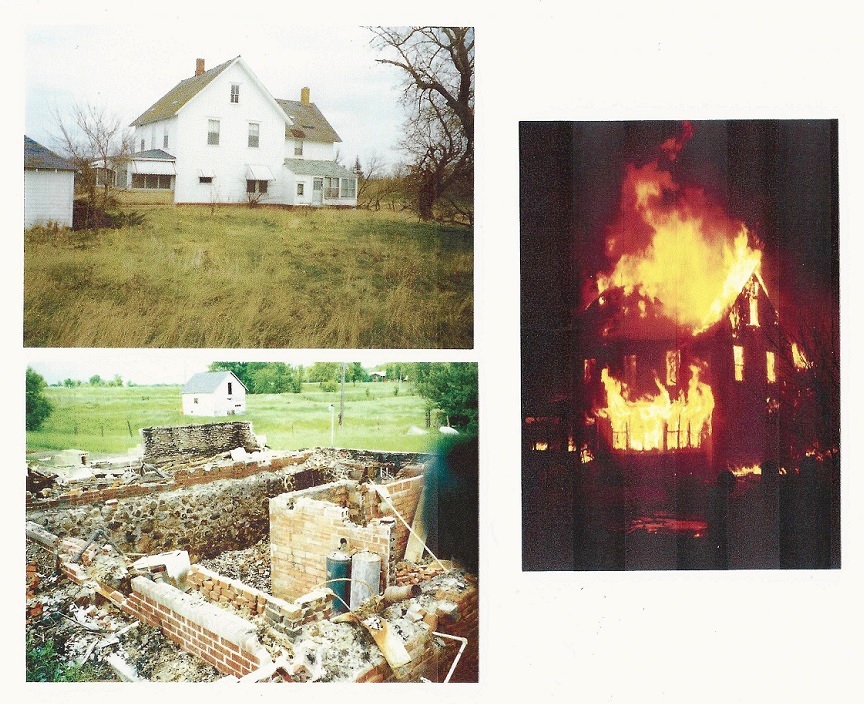Fifty years ago in rural Isanti County, there was a golf-and-entertainment establishment that had its somewhat lengthy title pretty much covered. The Bar L Ranch Club featured, all to varying degrees, bar, L, ranch and club.
I know. If you read the title of this post, you might be wondering: What about the waterslide?
As they say, wait for it …
Bar L Ranch Club was both golf course and supper club — more prominently the latter, based on a half-dozen conversations I had with people who remembered the place. The club was situated 1.7 miles northwest of downtown Isanti, in Bradford Township, with the clubhouse/restaurant/dance hall near the corner of what is now County Highway 70 and 297th Avenue Northwest. The golf course, a nine-holer with grass greens, began near the clubhouse and headed west, then south, at one point tracking within 100 yards of the west bank of the Rum River, then heading back on a return trip to the clubhouse. (Its apparent out-and-back routing isn’t significant in a golfing sense, but I can’t say I’ve seen many like it on nine-hole courses in Minnesota.)
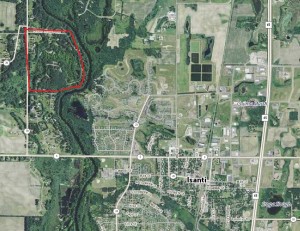
As for the “L” in Bar L, I never was told by anyone what it meant, and — journalistic blunder here — I must say I failed to ask. But my presumption is that “Bar L” was a hat tip to its owner-founder.
Ray Larowe founded Bar L Ranch Club in the mid- to late 1950s. He had a decent-sized, two-story building in place; the property it was on had served at the Johnson Sisters Rest Home (capacity: 12) from the early 1930s through the early 1950s.
Larowe, by all indications, was an idea man, a forward thinker. His idea in this case was to turn the old rest home and its grounds into a golf course and supper club, then develop the surrounding area.
“Ray began work on a nine-hole golf course and remodeled the former rest home into a restaurant,” a 1993 Isanti County Traveler story reported. “He platted a housing development along the river called River Ridge, providing access from the golf course and restaurant by building a circular road through the potential development. (That road is now known as River Ridge Road Northwest and 293rd Avenue Northwest.)
“The golf course was a par 35 regulation course open to the public. The club house expanded and it was a popular spot, offering a full dinner menu and often live entertainment. Minnie Olson, who with her husband Gil had formerly owned the Doodlebug Café in Cambridge, was one of the cooks at the club. Her pickled beef, served as an hors d’oeuvre, became widely known to buy it by the jarful to take home.”
Details about the golf course are hard to come by — at least they were for me. “It wasn’t a very elaborate course — kind of an executive course,” said Richard Guetschoff of North Branch, who estimated he played Bar L a dozen times. “Kind of a family-type course.”
“Short, smaller course,” agreed Ivan Peterson of Malmo, Minn., former son-in-law of Ray Larowe. Peterson said Larowe had never designed a golf course before starting Bar L.
Larowe’s background was in road and dirt construction, said his daughter, Avis Peterson of Mesa, Ariz. “He could look at a piece of ground and visualize what he could do with it,” Avis Peterson said.
By all indications, Larowe excavated earth and created a pond out of low-lying ground south of the clubhouse-supper club. The pond likely added aesthetic value to the property, though it doesn’t appear to have been in play for golfers. (This was a feature of import, as well, to waterslide fans — and yes, I promise I will get to that.)
The supper club component of Bar L was a popular place in the late 1950s and 1960s. Many patrons were employees at the Nike Missile Base in nearby Stanford Township, established in 1960 as a means to defend the Twin Cities during the Cold War years.
“There was a house and barn and horses and horseback riding and barn dances” at Bar L, Avis Peterson recalled.
Peterson helped with cooking and cleaning. She helped explain both the “ranch” and “bar” components of the place.
“The original chairs in the clubhouse had cowhide on the upholstery. It was Western-themed inside,” she said. “It was a dry county, so you couldn’t sell liquor. People had locker stalls with liquor in them, and they could buy setups (from Bar L). The Hawaiians was the band that played there every Saturday night for a long time.”
Eventually, a sister establishment named Augie’s Auggies Hayloft opened a couple of hundred yards east of the Bar L clubhouse. “It was a converted barn and offered refreshments and short orders when the main house wasn’t open,” the Isanti County Traveler story read. “There were also horses for trail riding for a time. Later, snowmobile races were held on winter Sundays.”
The golf course, the Traveler reported, never was particularly successful. The Traveler reported that high water in springtime flooded portions of the golf course and the River Ridge development, though one golfer told me the course didn’t have severe flooding issues.
“The final blow to the Bar-L came on February 20, 1970, with a disastrous fire,” the Traveler reported. “Losses were estimated at between $400,000 and $500,00. While there was talk of rebuilding, that never came to pass. Auggies Hayloft remained open until it too burned a year later.”
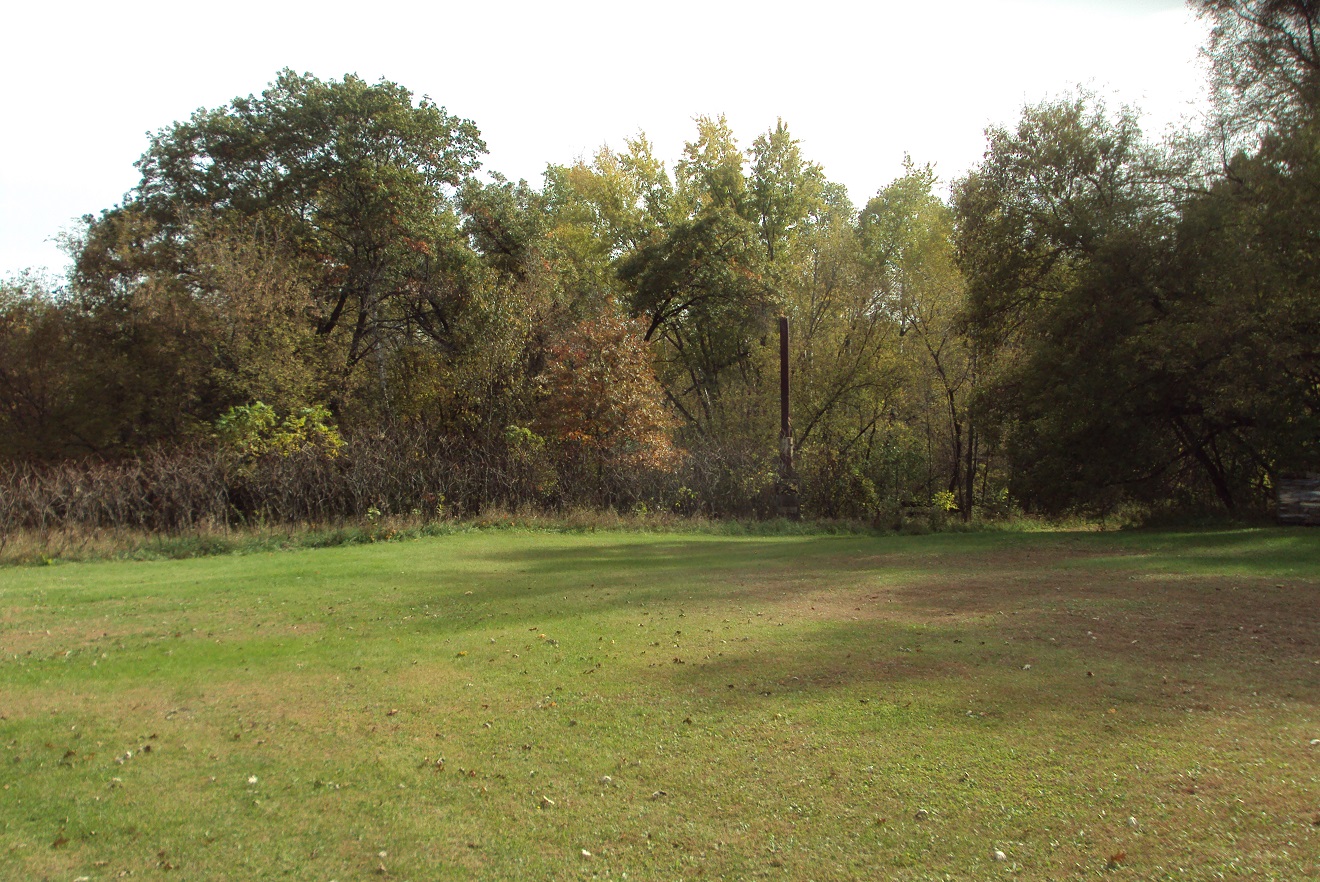
Larowe had in the meantime become the founder of another golf course — Golden Tee Country Club, a nine-holer in Ham Lake that was incorporated in 1964. Larowe again conceived of something greater than a golf course — homes, townhomes, tennis courts and a tournament-quality golf course, according to a 2012 letter sent by Avis Peterson to Linda Coffin, who wrote a history of what started as Golden Tee and, after Larowe’s exit as owner, became Majestic Oaks Golf Club in 1971. Larowe’s vision essentially was realized, as Majestic Oaks currently features 45 holes of golf plus an events center and dinner theater.
Back to the Bar L site …
Larowe’s old property — the interior of the semi-circular area created by 297th and 293rd avenues and River Ridge Road — is now occupied primarily by the pond, wetlands and about 20 homesites. The Traveler reported that one home lies on what used to be the old third green at Bar L.
There are a few other odd details and rumors about Bar L that I researched but never could confirm or explain:
— Though Bar L has been closed for 45 years, it still is listed as an operating golf course on at least one Internet site, one that lists “youth golf” venues. Parents, don’t go dropping your kids off in Bradford Township for any daylong instructional golf clinics. You’ll be disappointed.
— A trail bisects the Bar L property and runs north-and-south behind what is now the yard of a homeowner who referred to it as “The Oxen Trail” and suggested it predates the golf course by many years. The trail is clearly visible in a 1938 aerial photo of the area and runs for at least two miles north and south of the golf course site.
— One of the River Ridge residents passed along two tidbits. First, he said he heard that former Minnesota Twins star Harmon Killebrew once was interested in buying Bar L. I made an inquiry with the Killebrew family that was not met with a response. Then I noticed in an old plat map that property just west of Bar L once was owned by an entity called Wheelock Enterprises — and Wheelock Whitney and family were prime figures in the early years of the Minnesota Twins. There is a Wheelock Enterprises based in Stillwater, but again, I was unable to connect with that business, so I have to reach the conclusion that all of this is just odd, random coincidence.
— Second, the River Ridge resident said that a creek that runs through the southern part of the site — he called it Lost Creek — was considered a dividing line between the Lakota/Dakota Sioux and Ojibwe tribes of North America. I couldn’t find any verification of that, or for that manner any refutal, and there is at least a grain of credibility to the claim. Lake Mille Lacs, 45 miles to the north, is considered a sacred body of water by the Dakota Sioux, and the Rum River, which emanates from Lake Mille Lacs, is known as “Spirit River” in the Dakota culture.
Lost Creek, incidentally, likely was the primary source of flooding on the Bar L grounds and was the stream that Larowe tapped into to build his pond next to the clubhouse.
Which brings us, finally and not coincidentally, to the waterslide.
“Behind the clubhouse,” Avis Peterson said, “he (Ray Larowe) built a sauna, and then he built a slide to go behind the sauna and into the pond. You’d go down the hill and into the cold water.”
There are crumbling, concrete remains of the sauna near the house that is on the site that was the Bar L clubhouse. The old sauna is on a hillside, and the current resident uses the bank as a sliding hill in the wintertime, leading down to the pond.
The gentleman who owns the home had no clue that Ray Larowe’s Bar L revelers once slip-slided their way into Ray’s pond.
Don’t believe the waterslide story? Check out the photos below.
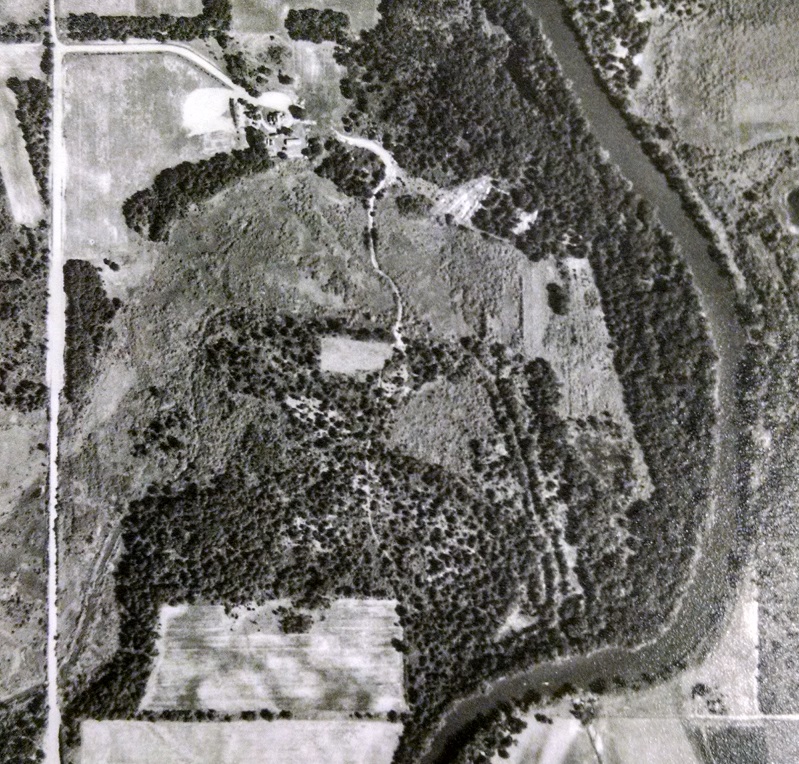
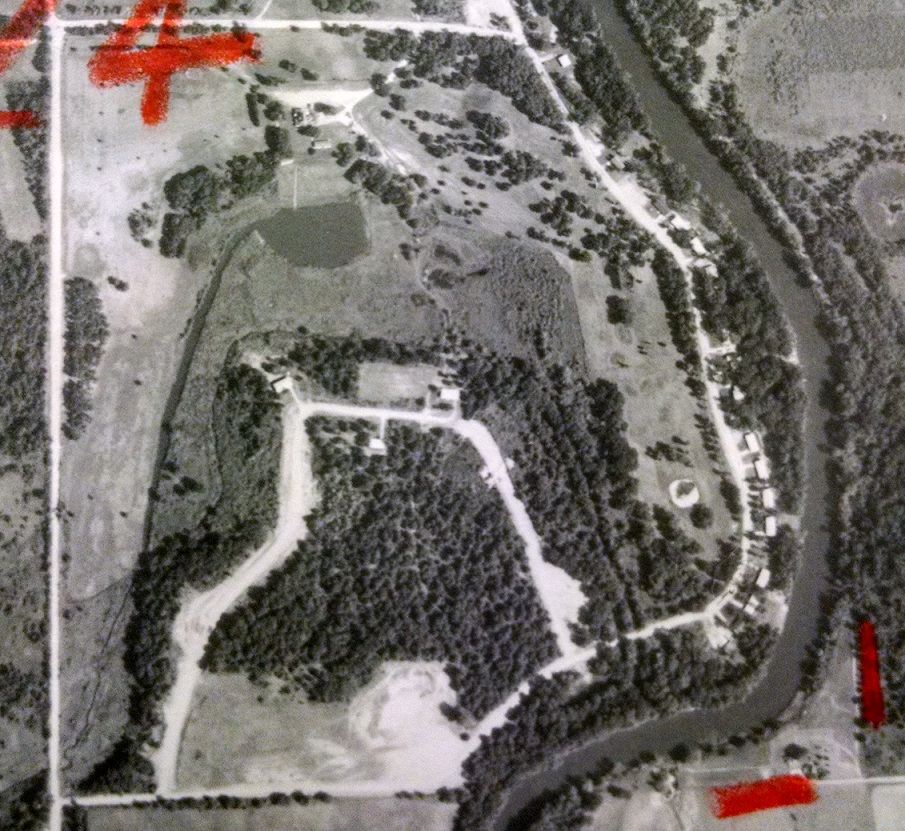
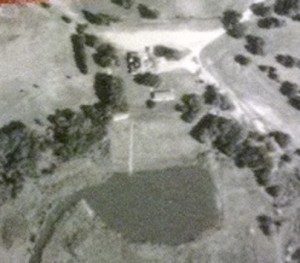
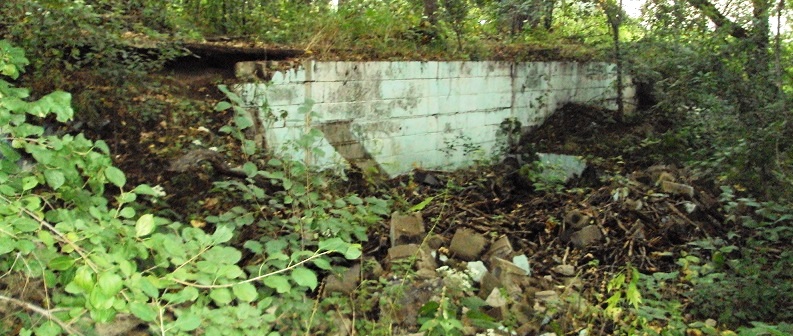
Thanks to the Isanti County Historical Society for considerable information on Bar L Ranch Club and its Isanti County lost-course predecessor, Shady Oaks (see previous post).
January 2020 footnote: I found a Minneapolis Tribune ad from Oct. 17, 1968, advertising Auggies Hayloft (it appears I had the spelling wrong in the original post). Here it is:
